Environmental Infrastructure Research Department
- Establishment of indoor radon management basis and research on reduction measures for (newly built) multi-family housing(Ⅰ)
The need to reduce indoor radon in apartment buildings and manage its sources has recently emerged due to exposure to high indoor radon concentrations in newly built multi-family housing. Thus, to prevent health damage caused by radon exposure, the Living Environment Research Division has provided proper ventilation methods since 2020, such as operating mechanical ventilation facilities in multi-family housing. For natural ventilation using windows, it suggests ventilating for at least 30 minutes with cross ventilation (opening the living room and kitchen windows simultaneously). For mechanical ventilation, it suggests operating for at least 2 hours on medium mode. It is considered that methods above can make average indoor radon concentration stay below the recommendation level(148 Bq/m 3 ) for 8 hours. The Division also devised a radon exhalation rate test method using the closed chamber technique for various indoor building materials and an indoor radon contribution rate assessment method based on the mass-balanced model. It promotes research to secure basic data necessary for managing building materials known as sources of radon in multi-family housing, such as investigation of the correlation between exhalation rate and indoor radon concentration.
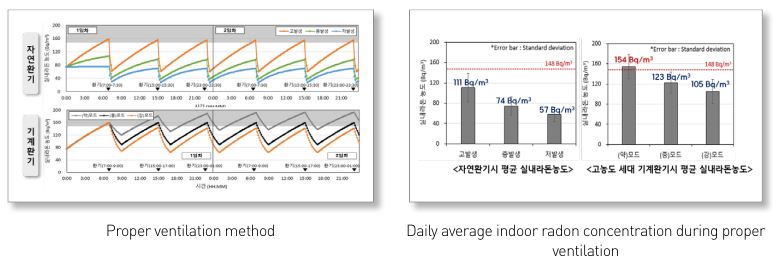
- A Study on the assessment of Noise Annoyance according to Living noise source(Ⅰ)
In 2018, the WHO recommended implementing noise management policies considering the country’s specific environmental conditions based on the noise annoyance felt by people rather than the decibels of the noise. Accordingly, the NIER is promoting research on noise annoyance to identify causes of annoyance and subjecitve sensory indices like sharpness and roughness, focusing on living noise sources, where most complaints originate. For this purpose, we first constructed a sound source playback and evaluation system in an anechoic chamber and found that people feel different levels of annoyance from natural sounds and artificial noises even at the same decibels. By heavily promoting research on annoyance evaluation, focusing on noise sources with frequent complaints (e.g., construction sites), we expect the paradigm to shift from source-oriented living noise management to human-oriented management.
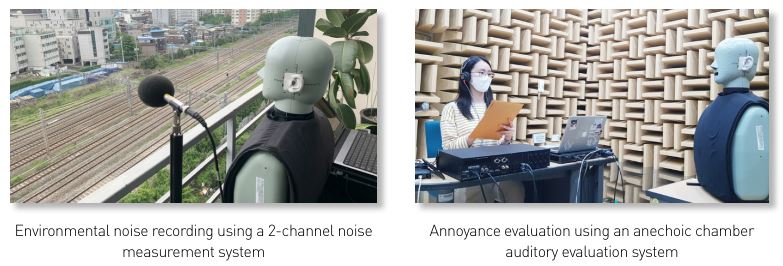
- Research on strengthening water safety through management of tap water contaminants
Red or black tap water is sometimes supplied to homes due to foreign substances generated in the tap water supply process or separated from the pipeline, occasionally leading to big complaints. This has spurred concern about tap water contaminants, with increasing households using faucet filters and the like. When a foreign substance-related accident occurs, the government and water service providers face difficulties stabilizing water quality and resolving complaints, and the public’s perception of tap water safety worsens. Accordingly, the NIER published the “Guidelines on Filter Test Methods for Rapid Judgment of Water Quality” to help water service providers respond quickly and effectively to abnormal water quality caused by colored particles, and to manage aesthetic aspects of water quality objectively and scientifically even in normal times. The book contains a standardization (draft) of filter test methods, examples of setting criteria for normalization in case of abnormal water quality, and application methods.
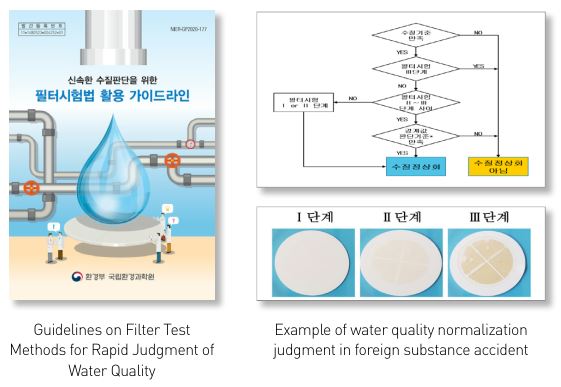
- Research on establishing a response system for harmful microorganisms in water environments
Antibiotic-resistant bacteria caused by the misuse of antibiotics pose a serious threat to public health. The WHO has stressed the need to build an antibiotic resistance monitoring system and integrated monitoring system for people, animals, and the environment under the concept of OneHealth. Accordingly, a joint project among seven ministries was implemented. In the environmental field, we made a standard operating procedure for analyzing antibiotic-resistant bacteria based on culture-dependent method and accumulated related data through antibiotic resistance assessments and monitoring studies to establish a response system for antibiotic-resistant bacteria in water environments. Further, we plan to contribute to national antibiotic resistance management from the perspective of One-Health by investigating the distributions of antibioticresistant bacteria and control technologies in water environments. To enable a science-based response to the COVID-19 pandemic, we performed research on building an analysis system using sewage-based mechanics. Accordingly, we established a COVID-19 standard analysis method and quality control method. In 2022, we plan to propose a mid-to-long-term management system plan for novel viruses through a pilot study monitoring influent and effluent from sewage treatment facilities in areas with COVID-19 clusters.
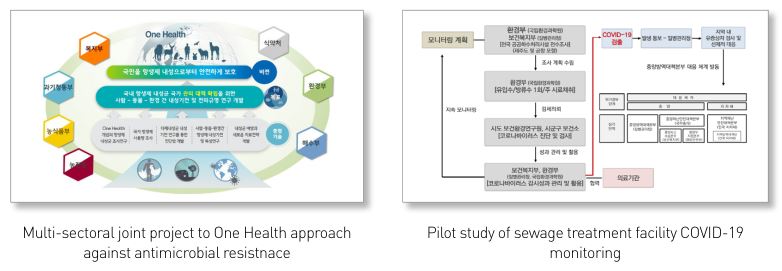
- Development and technology transfer of automatic measurement system for taste and odor substances in tap water
Algae is occurring in large quantities in water sources due to climate change, making it difficult for drinking water treatment plants to treat taste and odor substances (geosmin, 2-MIB) originating from algae. Although geosmin and 2-MIB have no problems in terms of health and safety, they are not properly eliminated in the general water treatment process. As little as 0.00001 milligrams per liter can cause bad taste and odor degrading the reliability of tap water. Effectively treating these substances requires quickly measuring the concentrations flowing into the drinking water treatment plants. The NIER developed a system to automatically measure taste and odor substances in tap water in real time and transferred the technology to a company for commercialization. Once a commercialized automatic measurement device is released, we expect it to be possible to improve the treatment efficiency of taste and odor substances by injecting suitable chemicals at the proper time and reducing water treatment budgets.
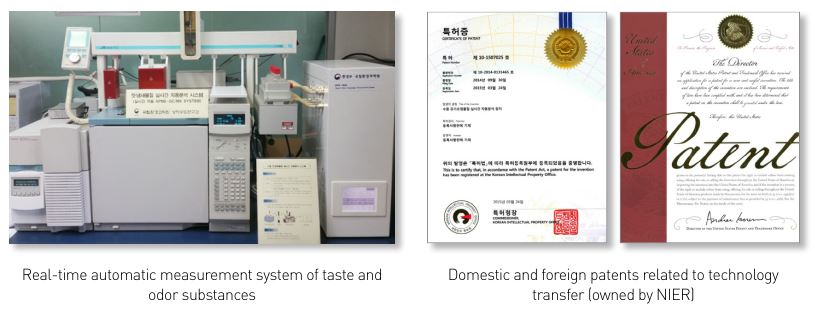
- Strengthening test and inspection quality management for high - quality national environmental data
To ensure the suitability of environmental data from testing and inspection institutions in the environmental field, we conducted proficiency tests in nine fields (1,152 laboratories, 116 items). Consequently, we found that 1,141 laboratories (99.0%) were satisfactory. We also conducted site evaluations (594 laboratories, 13,564 consulting cases) and found that 361 laboratories (98.0%) were satisfactory. Further, we piloted the “Equipment Reliability Assessment System (Test Beds)” to resolve performance-related concerns and stimulate the market for domestic environmental measuring instruments (water quality field: TOC, TN, TP). For the operation of KS and ISO standards in the environmental field, in collaboration with 11 NIER departments and external experts, we announced 193 KS national standards and gathered and submitted domestic opinions on 316 ISO standards. Both standard methods proposed to ISO were finally approved as international standards. We are also devoting efforts to enhancing the accuracy and reliability of environmental measurement data, such as by establishing and revising 242 standards across six fields, including air pollution process test standards.
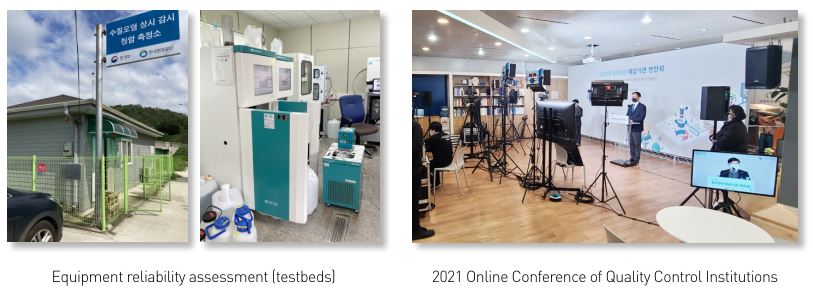
- Vitalization of joint research on environmental issues and pollutant tracing research
To identify environmental pollution history and causal relationships, we developed pollution tracers and conducted a field application pilot study. To utilize stable isotope ratios as a chemical finger-printing technique, first, we established an analysis technique for stable zinc isotope ratio (δ 66 Zn) in environmental atmospheric fine dust. Second, we assessed the field applicability of water quality total organic carbon/nitrogen stable isotope ratio (DOC- 13 C, NO 3 - - 15 N) analysis. Third, we performed a field application study of a heavy metal environmental pollution history survey technique using tree rings. Finally, we conducted joint research with the NIES** of Japan to improve the stable isotope analysis system for low-concentration mercury in the environment to support the Minamata Convention on Mercury*. Through the operation of the Environmental Scientific Investigation Research Group and the Environmental Isotope Analysis Research Group, we have promoted exchange and cooperation between institutions for joint research. This includes conducting training on stable isotope analysis equipment and promoting discussions on precision and accuracy comparison tests of analysis values using standard materials. We also devised a quick search method that can analyze the mass information of all substances in a sample by deviating from the existing method of selecting a target material to analyze specifically. Further, we are developing a technique for tracing pollutants by analyzing pollutant patterns.
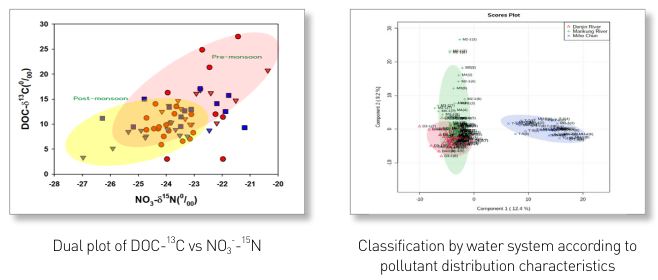
- Research on risk - based soil pollution management and improvement of the impact assessment system in apprehensive areas
For follow-up measures to the amendment (November 2018) of the Enforcement Rules of the Soil Environment Conservation Act related to the designation of dioxin soil pollutants, we created dioxin soil pollution standards (draft) considering domestic background concentrations and risks. Subsequently, we conducted a survey pilot project to designate unregulated soil pollutant monitoring items and devise an operation plan according to the Second Master Soil Environment Conservation Plan (2020–2029). We also prepared revised (draft) guidelines for post-environmental pollution impact surveys in the vicinity of abandoned mines and improved the methods (draft) of investigating residual pesticides in the soil and water quality of golf courses. Moreover, we operated a National Standards Expert Committee in the soil quality(ISO/ TC 190) and have established, amended, repealed, and confirmed 66 national standards (KS) and reviewed 63 international standard proposals (ISO).
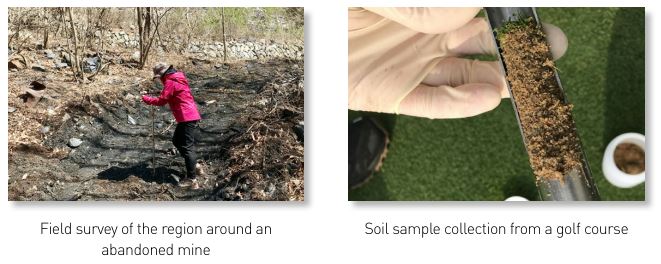
- Advancement of integrated groundwater management and strengthening groundwater quality management in areas vulnerable to pollution
In line with the water management unification (2018), we established an advanced strategy for the integrated management of groundwater including the harmonized groundwater-surface water quality management and the enactment of monitoring system. Through a survey on unregulated groundwater pollutants, we proposed new standard candidate substances (PFOA, PFOS) for 2021. We also rearranged the Standard Method for groundwater monitoring items and standardized the field item measurements. For the water quality management in vulnerable areas to pollution, we are operating the Safe Groundwater Call Center*. Further, we performed a survey that aimed to identify national background concentration of natural radioactive substances (e.g., radon) from total 201 sites of the national groundwater monitoring network in 2021. Moreover, we took the initiative in resolving current issues by developing an AI-based leachate runoff assessment model (patent registration) and improving groundwater quality in livestock manure spill areas (Hallim-eup, Jeju-do). Through the Nitrate Nitrogen Groundwater Quality Improvement Research Project (five villages in Chungnam), we assessed pollutant contributions and forecasted improvements in groundwater quality.
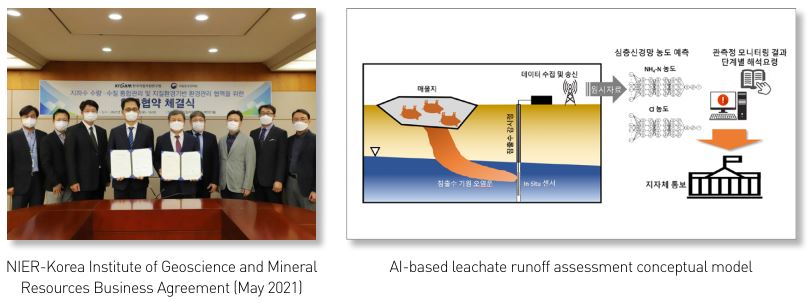
- Operation and improvement of the Soil and Groundwater Information System
In accordance with Article 4-5 of the Soil Environment Conservation Act (November 2017), we are building a system (2019–2022) for the history management of soil pollution, including the current status of facilities of potential pollution source and soil pollution site life cycle (e.g., nationwide soil surveys and remediation), within the SGIS (https://sgis.nier.go.kr). Moreover, we have developed user-tailored statistical functions based on data linkage to support soil pollution management policies. We restructured the website to reflect the amended soil and groundwater-related laws and notices, enhanced the exported polluted soil management system, and have improved data quality and maintained the system to ensure data reliability. To improve the system’s user convenience, we conducted virtual training (approximately 180 participants) with local government officials and other stakeholders.
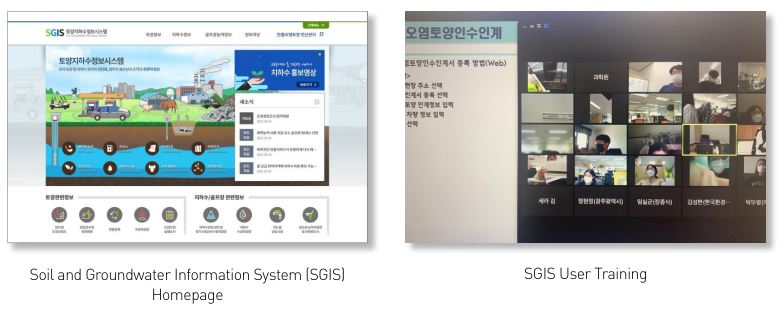
|